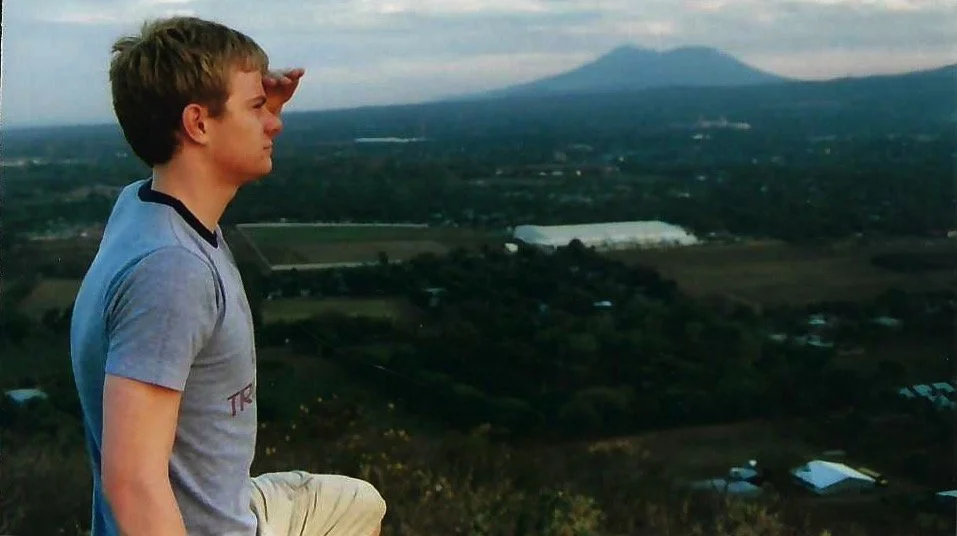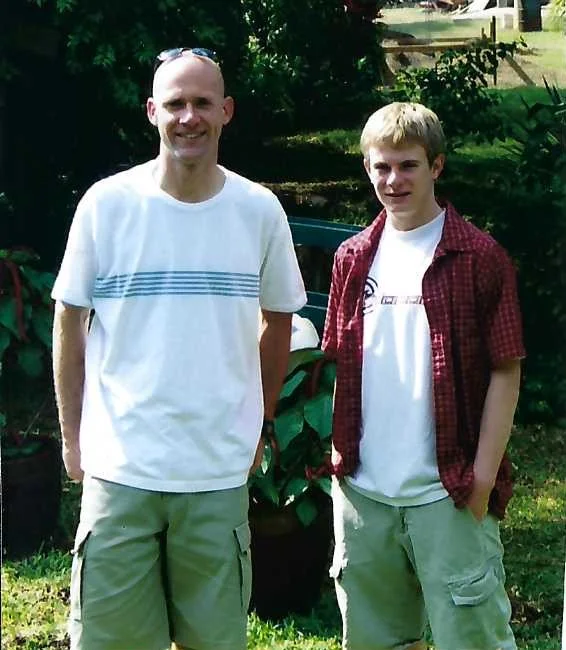Nicaragüense
I don’t remember the flight path.
I don’t remember the names of the people we stayed with.
But I do remember the smells — the warmth of the Central American air on my arms, and the chill of the air-conditioned room that Eric and I shared.
In Spring 2005, I spent a week in Managua and Granada, Nicaragua — two cities where my grandmother grew up before immigrating to the U.S. in the late 1920s.
At the time, Eric was the Dean of Student Affairs at the University of Montana–Western. He’d been assigned to visit a student completing her teaching hours at a boarding school in Managua. Knowing my family connection, he invited me along.
Having just returned from a life-changing trip to Peru, I couldn’t wait to get back to a Spanish-speaking country. The chance to walk the streets where my grandma once did made it even more meaningful.
To this day, I’m the only one in my family who has returned to her homeland. In 2020, I even saved up enough to take my dad and brother, Kyle, on an all-expenses-paid trip — but they both declined. My dad said, “Thank you, but I’d rather go to Nantucket. It’s safer.” Kyle asked, “Well… what would we do?” That about sums up the level of interest in our Nicaraguan roots.
This was only my second time leaving the U.S., and I expected Nicaragua to feel similar to Peru. I was wrong. The Spanish dialect was harder to follow, the streets rougher, the energy raw. I was seeing firsthand what it meant to live in the second-poorest country in the Western Hemisphere, after Haiti.
But Nicaragua has grit — and beauty. Its people are resourceful. Its landscapes stretch from the Pacific to the Caribbean. There’s a toughness born from necessity, and a warmth born from community.
That resilience is something my grandmother carried with her to the U.S. She passed it down to my dad and uncle — and through them, to me, Kyle, and our cousins: Steve, Karen, and Susan.
I’ve come to believe that work ethic isn’t just environmental — it’s hereditary. It’s shaped by what you see, what you survive, and what you learn to value.
One of my favorite memories from that trip was meeting Duilio, a local potter whose work was sold all over the world — even in a well-known Los Angeles art gallery. Eric bought one of his pots to take home.
Months later, during cleanup after a senior football dinner, that pot met an unfortunate end. Let’s just say the vacuum cord and a couch cushion were involved… and I’m still blamed for it. I'm not sure how the pot made it's way to a precarious location....but it did. Thankfully, I later recruited someone headed to Nicaragua who replaced it in 2018.
Still, it might be time to take another trip back — to see Duilio, buy another pot, and reconnect with that part of my family story.
Looking back, traveling internationally at 17 gave me perspective — and roots that still run deep.
Some trips change how you see the world. This one changed how I see myself.
It taught me that strength can come from scarcity, pride can come from humility, and that the roots we choose to nourish are the ones that shape who we become.
I didn’t just visit my grandmother’s homeland — I reconnected with the part of her that still lives in me.
Keep Pushing
Alex de Golia







